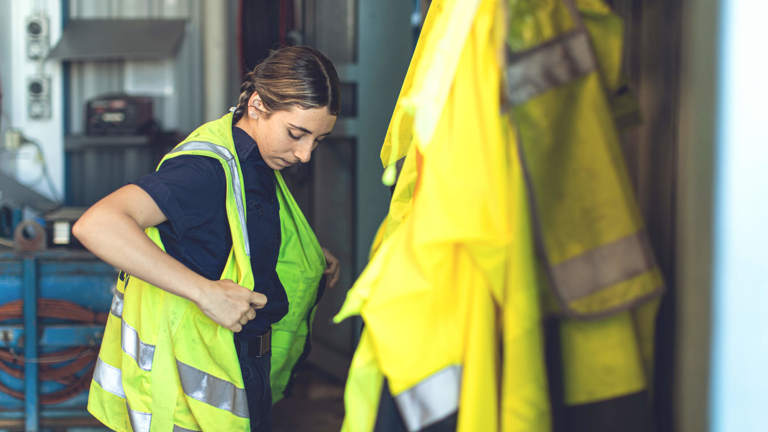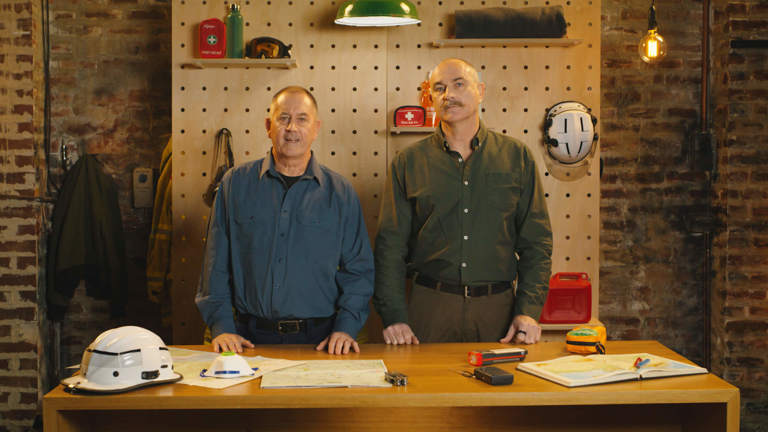Fire experts and meteorologists are warning that Australia could be in for a challenging bushfire season, with above average temperatures contributing to an increased risk of fire in parts of the country.1
Bushfire season has already started in northern Australia and the central latitudes, and will begin in southern Australia in December.2 With conditions predicted to worsen as summer takes hold,1 it’s vital to understand the risks and take steps to prepare for the high fire risk period – even if you live in the suburbs or close to our cities.
So, what can we expect this bushfire season, and how can we best prepare for what’s to come?
What is the bushfire risk this summer?
The Bureau of Meteorology is predicting an increased chance of unusually high maximum and minimum temperatures for large parts of Australia between November and January 2025.3 Meanwhile, the National Council for Fire and Emergency Services (formerly the Australasian Fire and Emergency Service Authorities Council or AFAC) is warning that many parts of the country – particularly large areas in Queensland and the Northern Territory – will face above-normal fire potential.1
Further south, the Victorian Country Fire Authority (CFA) is warning that the state also faces increased fire risk this season.4
“Victorians can expect an earlier start to the fire season in the southwest and western areas due to a drier-than-average first half of the year,” says Jason Heffernan, Chief Officer at CFA.
Alison May, Director of Community Risk and Resilience at Country Fire Service (CFS) in South Australia, has similarly flagged the far western, midwestern and southeast areas of her state as having a potentially elevated fire risk.
“Soil moisture levels are low in forest and scrub areas in the mid-north (of the state), which could lead to increased risk through the southern Flinders Ranges to northern Mount Lofty Ranges,” Alison says.
The New South Wales Rural Fire Service (NSW RFS) is expecting a normal start to the fire season but notes that western parts of the state are carrying large grass loads and that wet weather conditions have inhibited planned hazard reduction burns.5
RFS Inspector Ben Shepherd told ABC News that, due to wet weather, just 43% of the 325,000-hectare burning target was completed across NSW during the 2023-24 financial year.5
How climate change impacts the Australian bushfire season
With the ferocity of the Black Summer bushfires still fresh in the minds of many Australians, experts say it’s important to reflect on what that means for bushfire seasons to come.
“The fires in 2019 and 2020 in New South Wales were five times larger than any bushfires experienced before, highlighting how unpredictable and dangerous fire seasons can become,” says Jim Smith, veteran firefighter and former Deputy Commissioner at Fire and Rescue NSW.
With climate change driving increased frequency and risk of dangerous bushfire conditions,6 Alison says it’s essential property owners are ready for fire season, whether they live in traditionally bushfire-prone areas or urban settings.
“Climate change means there is a significant likelihood of more severe, more frequent and longer-impact climatic events over the coming years,” she says.
“Many people might not even realise that they live in, or travel through, bushfire risk areas. This is often the case for residents living on the urban fringes of cities and towns and urban travellers.”
The dangers of ember attacks
You don’t need to live in a rural area to be at risk from bushfires.7 In fact, in a bushfire, at least 85% of homes are destroyed without being directly exposed to flames or significant radiation.8
Mark Dobson, active firefighter and volunteer team manager for Disaster Relief Australia, says suburban residents often underestimate their risk of bushfire damage. He explains embers can travel kilometres from the main fire front and ignite homes even in urban areas.
“By removing ladder fuels like shrubs, broken branches and dry bark, you can significantly increase the chance of your home surviving a bushfire.”

He suggests applying metal fly screen mesh over vent holes and gaps around the house to stop embers getting under the house or into the roof.
“If you have a home that backs onto any kind of bushland, national park or even a council park, an important part of preparing your property is to ensure you have clear space so firefighters can do their job,” says Mark.
Key preparations for the bushfire season ahead
Fire services nationwide are urging residents to prepare their properties for bushfire season now, particularly if they live in high-risk areas.
A recent CFA survey found 45% of Victorians in bushfire-prone areas are not worried about bushfire safety, even though they face a higher risk than others.4
Getting ready for bushfire season may include creating or updating your bushfire survival plan, putting together an emergency kit and preparing your property by clearing gutters, mowing lawns and removing any flammable materials such as wood piles and fallen branches.
“Preparing for the threat of bushfire is an ongoing process, and people must take responsibility for their own safety and planning,” says Alison.
Jim emphasises the importance of having a bushfire survival plan tailored to suit your individual circumstances.
“Your plan should include where you’ll go, what you’ll take and when you’ll leave.”

“The best plans are prepared well before the fire season and are practised regularly.”
Staying informed during the bushfire season
It’s important to stay informed about fire danger in your region throughout the bushfire season. You can stay up to date by being across the improved and updated Australian Fire Danger Rating System,9 being aware of hazard reduction burns and total fire bans in your area and registering for any smartphone apps provided by your state or territory fire service.
“The Fire Danger Rating System will tell you how dangerous a bushfire could be if one should occur, with total fire bans declared for Extreme and Catastrophic ratings,” says Alison.
Preparation is equally important for those travelling or holidaying in bushfire-prone areas.
“Research shows only half of travellers or transiting workers regularly find out the Fire Danger Rating for the areas they are travelling to, while approximately two-thirds don’t think they need a bushfire survival plan because it’s not the area they live in,” says Alison.
“A traveller’s plan should include things like how they will access information and what they are taking in their vehicle, such as woollen blankets and protective clothing.”
This fire season, Youi has partnered with senior firefighters Jim Smith and Mark Dobson to create the you.prepared emergency content hub. Explore the hub today to discover valuable bushfire preparation tips, guides and information for the bushfire season ahead.
Jim Smith & Mark Dobson
With a combined firefighting history of more than 60 years, Jim Smith and Mark Dobson are leading members of Australia’s firefighting community. Their experience encompasses major bushfire events, including the Canberra Bushfires in 2003, Black Saturday in 2009 and the Black Summer fires of 2019-20. The pair now work together in their respective roles as General Manager and Founder of Ordinary Courage, a consultancy dedicated to providing organisations with the tools to sustain good workplace mental health. Youi is proud to partner with Jim and Mark in the creation of this bushfire preparedness content.
The content in this article has been prepared based on current government and emergency services guidelines and expert advice provided at the time of publishing. This information is subject to change. Please be sure to check for the latest information and always consider your personal circumstances regarding bushfire preparedness and response.
Where you have increased your cover or reduced your excess within 72 hours (or other period noted on your policy schedule) of a flood, storm, hail or bushfire occurring, cover will be limited to the amount that was effective prior to the change. Loss, damage or legal liability caused by, resulting or arising from flood, storm, hail or bushfire during the first 72 hours (or other period noted on your policy schedule) of your policy first being purchased is excluded unless certain conditions apply. Refer to the relevant PDS, TMD and your policy schedule for full T&Cs.
1 Source: National Council for Fire and Emergency Services – Seasonal Bushfire Outlook Spring 2024, September 2024
2 Source: Bureau of Meteorology – Fire weather seasons
3 Source: Bureau of Meteorology – Climate outlooks
4 Source: Country Fire Authority – Bushfire safety overlooked by nearly half of Victorians in risk areas, survey finds, September 2024
5 Source: ABC News – RFS falls short of target for hazard reduction burns ahead of bushfire season, September 2024
6 Source: Bureau of Meteorology – How weather affects fires
7 Source: Qld Fire Department – Know your risks
8 Source: CSIRO – Preparing your home for bushfire, September 2023
9 Source: Australian Fire Danger Rating System – Know the Changes. They could save your life



